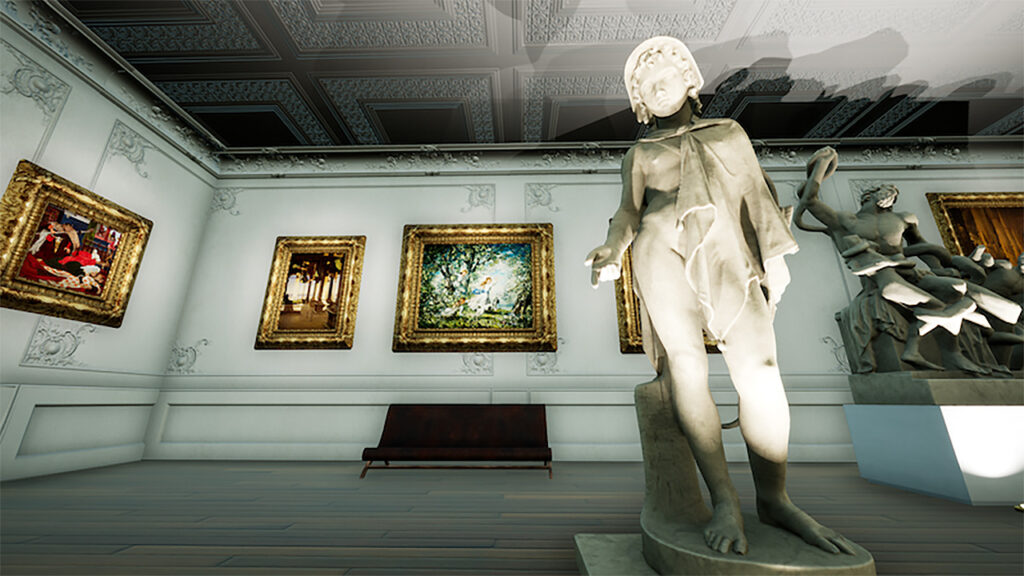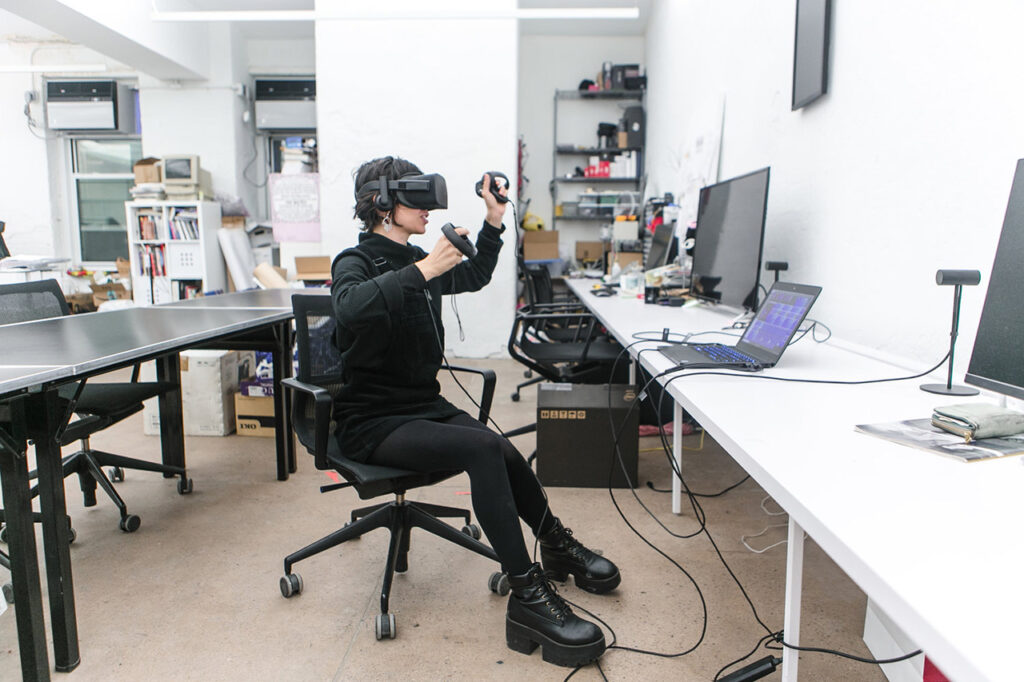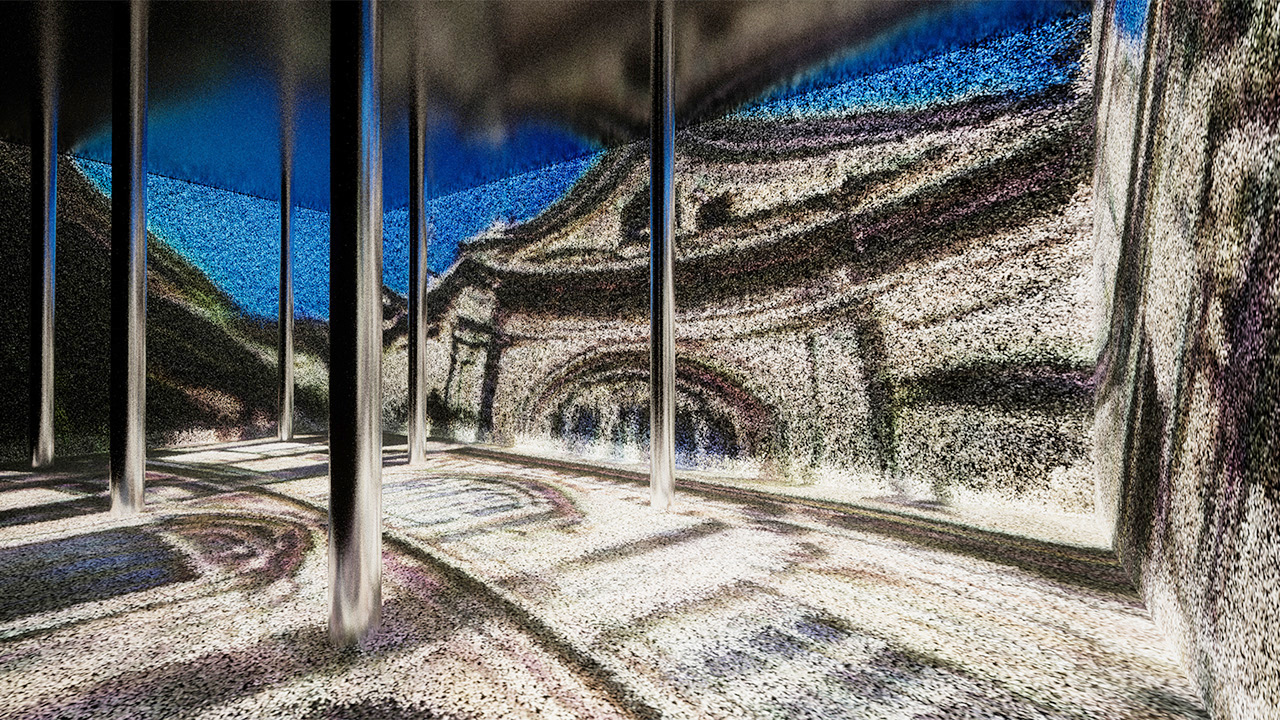Certainly, the pandemic posed an existential threat to cultural organizations, but for many, it also radically challenged how they operate, program, and interact with audiences. So how might the learnings of the past 18 months fuel museum thinking and practice moving forward? It was a question explored by MUZE.X, the biennial conference that took place between October 18 to 20 at the University of Malta, which looked toward ideas and initiatives that are defining museum futures.
Featuring panelists from across the academic and museological spheres, the conference probed how technology and the democratization of accessibility might help pave the way for truly human-centered institutions and catalysts for society-wide change. From the sessions, here are three ideas of what a museum of the future might be.
It spans platforms

The Birmingham Museum & Art Gallery on Occupy White Walls — a collaboration demonstrating how museums can leverage gaming platforms to reach new audiences. Image: Birmingham Museum & Art Gallery
Unsurprisingly, in a post-COVID landscape, digital and technology came to the fore at MUZE.X, with presenters spotlighting the adoption of advanced tech like AR and AI to digital platforms like TikTok. As Anna Lowe, Smartify’s Co-Founder, highlighted in her session, museums today need a “multi-platform” approach — not simply to spread themselves across multiple sites, but to tap each platform’s audience and format for purposeful storytelling.
In her session, Amy Hondsmerk, a PhD researcher at Nottingham Trent University, explored museums’ effective use of video games, particularly Animal Crossing, to engage audiences over lockdown. Such digital pivots, she noted, should go “beyond merely adapting existing practices to the digital realm, but rather to see what digital can do differently.”
It nails the hybrid model
Vastari Labs’ NFT of William Blake’s “The Ancient of Days” offers a multispectral reading that aims to differentiate itself from the original work. Image: Vastari LabsSince reopenings commenced, hybridity has become a hot topic as cultural institutions consider how their digital and physical offerings might co-exist. For Bernadine Bröcker Wieder, Co-Founder and CEO of Vastari, though, what needs further definition is “the relationship between the digital images and the original objects themselves.” For one, if anyone can right-click and download a digital asset for virtual display, what significance does the physical object have?
Additionally, museums need new usage terms and guidelines for these digital assets (and particularly so with NFTs). Bröcker Wieder foresees “the equivalent of exhibition loan agreements for digital assets, where it becomes clear what the resolution is and how you expect it to be displayed in a digital context.” Digital is an ephemeral format, so all the more, “we need to create a framework to understand this technology so that it’s not leading away from us.”
It thinks like a startup

The first-ever museum-led innovation incubator, NEW INC offers a model for institutions looking to accelerate ideas and products. Image: NEW INC
“A 100-year-old startup” is how Brendan Ciecko, Founder and CEO of Cuseum, framed the way museums have innovated over the past 18 months. The agility and experimentation (and vocabularies) on display reflected a cross-pollination with startup culture that, he emphasized, should be further advanced.
Beyond partnering with actual startups, he highlighted the role of innovation incubators in hatching ideas and products that museums “can bring to market faster and with a higher chance of succeeding.” Or how about hosting a hackathon? Institutions from the Metropolitan Museum of Art to M+ have done so as a way of injecting experimental thinking into their fold. “Innovation is here for the taking,” he concluded. “It’s easier to jumpstart than ever before with new forms of connections, openness, and partnerships.”



